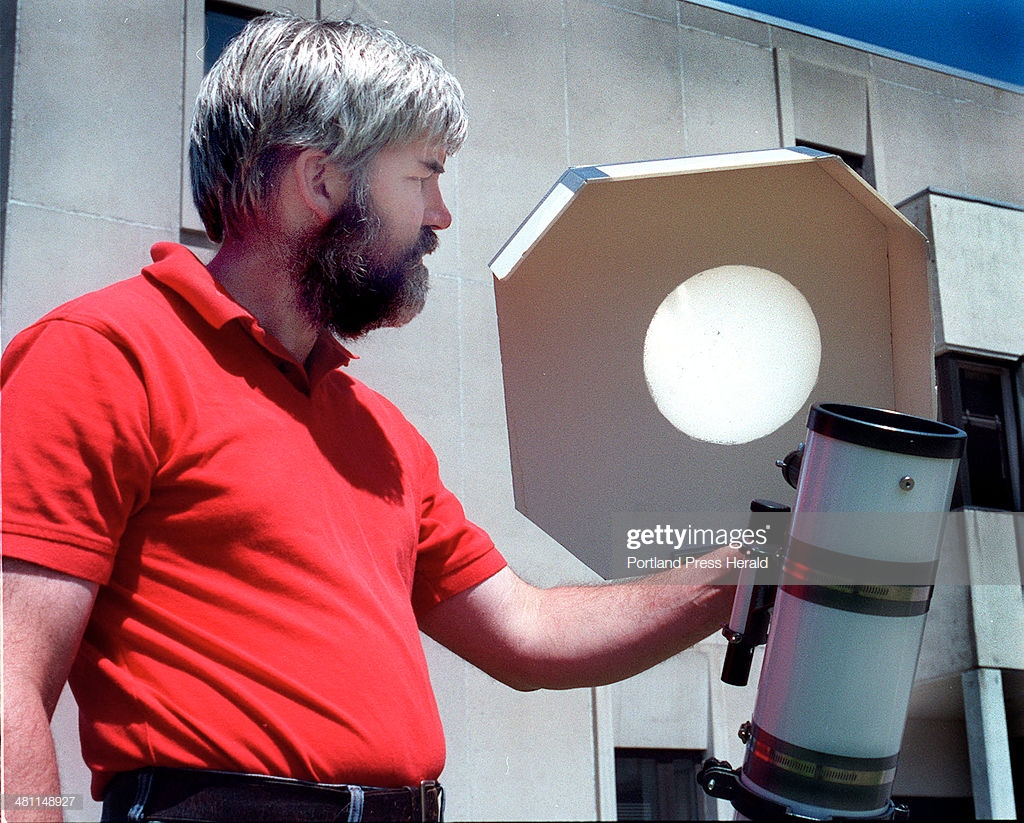THE SOUTHWORTH PLANETARIUM
207-780-4249 www.usm.maine.edu/planet
70 Falmouth Street Portland, Maine 04103
43.6667° N 70.2667° W
Altitude: 10 feet below sea level
Founded January 1970
Julian date: 2458773.16
2019-2020: XXXII
"Fun, fun, fun in the Sun, Sun, Sun..."
-"Red Dwarf"
THE DAILY ASTRONOMER
Wednesday, October 16, 2019
Meanwhile at the North Pole....

Polaris is about to appear!
The remarkably unremarkable north star around which all celestial objects seem to revolve and toward which all northern hemisphere observers turn whenever they want to get their bearings, is just now peeking through the seemingly interminable dusk dissolving gradually over the barren north pole. The dark shroud is slowly being drawn over the world's apex.
But, wait!
Hasn't the north pole been steeped in the stygian gloom since the autumnal equinox? Doesn't the north pole experience six months of daylight and six months of darkness?
Well, it certainly would if Earth weren't enveloped in a thin layer of gases. Were Earth just an uncoated rock such as the moon or Mercury, the north pole would snap into darkness as soon as the Sun descended below the horizon. However, this atmosphere causes the Sun's light to scatter across the sky. This scattering not only results in the pervasive blue we observe during the day. It also creates the array of gorgeous colors we see at dusk and dawn, as well as the more muted whites, blues and greys we see after dusk or before dawn.
The north pole experiences the same period of gradual darkening that we see here each evening because of this light scattering. In fact, the top of the world undergoes the same three distinct twilight periods; Civil twilight, nautical twilight and astronomical twilight.
Civil twilight starts when the Sun first moves below the horizon and continues until the Sun is six degrees below it. We refer to this period as "dusk." The Sun is below the horizon but within six degrees of it from the autumnal equinox until about October 9 - 10th at the north pole. Consequently, dusk lasts about three weeks. During civil twilight the sky slowly darkens so as to allow the brightest stars and planets to become visible.
Nautical twilight occurs when the Sun is between 6 - 12 degrees of the horizon. During this time period, the sky becomes dark enough to enable observers to see the brightest stars (including the 40 traditional navigational stars). At the same time, the horizon remains visible. The simultaneous visibility of the horizon and the brightest celestial objects permit navigators to measure the angular distances separating the stars from the horizon: essential information for celestial navigation. The Sun is between 6 - 12 degrees of the north pole's horizon from October 10 - October 25. Around this time -the first week of nautical twilight- Polaris, the 49th brightest star, becomes clearly visible.
Astronomical twilight, the final twilight phase, occurs when the Sun is between 12 - 18 degrees of the horizon. At this time, the fainter stars become visible and the horizon vanishes. When the Sun is more than 18 degrees of the horizon, the light scattering is negligible. The sky won't be any darker than it is when the Sun is this low. At the north poole, the Sun dips below 18 degrees around November 13th.

Wrong! Santa should be taking off in the darkness on Christmas Eve!
Astronomical twilight begins at the north pole around January 29th. Nautical twilight starts around February 17th. Civil twilight begins around March 5th.
Remarkably, the north pole only experiences the deepest darkness for about two and a half months. Of course, some parts of astronomical twilight are indistinguishable from darkness, so one could say that night almost lasts four months at the tip of Earth.
Polaris' visibility heralds the beginning of another long north pole night.
***

Steve Innes
(April 22, 1955 - October 16, 2011)
You will never be forgotten, Steve
TO SUBSCRIBE TO OR UNSUBSCRIBE FROM THE "DAILY ASTRONOMER" LIST-SERVE: http://lists.maine.edu/cgi/wa?SUBED1=DAILY-ASTRONOMER&A=1